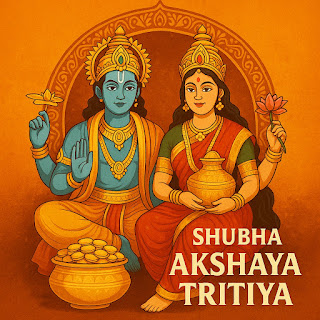Who Doh Hear Does Feel: The Cost of Ignoring Wisdom.
The Trinidadian proverb, “Who doh hear does
feel,” warns that those who disregard wise counsel often face painful
consequences. This timeless truth urges us to listen with humility and act with
discernment to avoid unnecessary suffering.
Two powerful narratives—a classic fable and
the story of Ravan’s defiance in the Ramayan—illuminate this lesson,
guiding us toward openness and wisdom in our choices and relationships.
The Fable of
the Frog and the Scorpion.
One day, a scorpion asked a frog to carry
him across a river. The frog, remembering his parents warning about the
scorpion, hesitated, saying, “But you’ll sting me.”
The scorpion replied, “Why would I do that?
We’d both drown!”
Convinced, the frog agreed. But midway
through the river, the scorpion stung him. As they sank, the frog gasped,
“Why?!”
The scorpion simply said, “It’s in my
nature.”
Despite his better judgment, the frog
ignored the danger signs and paid the ultimate price.
This fable teaches that ignoring sensible
warnings, even those born from instinct or experience, can lead to destruction.
Listening carefully—especially when risk is involved—can save us from
unnecessary pain.
Ravan’s
Refusal in the Ramayan.
In the Ramayan, Ravan, the powerful
king of Lanka, abducted Devi Sita, sparking a war with Lord Ram. Despite his
might, Ravan received repeated counsel from those closest to him to return Sita
and avoid doom, yet his pride blinded him.
- Mandodari’s Plea: Ravan’s wife, Mandodari, urged him to
release Sita, warning that his obsession defied dharma and would destroy
Lanka. She foresaw the wrath of Ram, a divine incarnation, but Ravan
dismissed her as overly cautious, believing his invincibility was assured.
- Vibhishan’s Counsel: Ravan’s brother, Vibhishan,
implored him to restore Sita to Ram, emphasizing righteousness and the
inevitable triumph of good. Ravan, enraged by Vibhishan’s dissent, branded
him a traitor and exiled him, ignoring the wisdom of his kin.
- Angad’s Warning: When Angad, Ram’s emissary, arrived
in Lanka, he boldly advised Ravan to surrender Sita, cautioning that Ram’s
army was unstoppable. Ravan scoffed at the young vanara’s audacity,
refusing to heed the message delivered at his own court.
- Hanuman’s Advice: Hanuman Ji urged him to return Sita
to avoid annihilation. Hanuman spoke of Ram’s mercy but also his strength.
Ravan, unmoved, mocked Hanuman’s words, clinging to his arrogance.
Ravan’s refusal to listen led to his
downfall. Ram’s army besieged Lanka, and Ravan fell in battle, his kingdom
reduced to ashes. Had he heeded the advice of Mandodari, Vibhishan, Angad, or
Hanuman, he might have spared himself and Lanka from destruction.
This story underscores that pride can deafen
us to wisdom, inviting calamity. Listening to diverse voices, even when they
challenge us, can avert disaster.
Learning
Through Listening.
The saying “Who doh hear does feel” echoes
through these stories. The frog’s misplaced trust and Ravan’s arrogance show
the consequences of dismissing guidance. To live wisely, we must embrace
humility and openness in our decisions and interactions. Here are practical
steps to embody this lesson:
- Hear All Perspectives: Like Ravan, consider advice
from varied sources—family, friends, or even adversaries—before deciding.
- Check Your Pride: Reflect on whether ego is blocking
wisdom, as it did for the frog and Ravan.
- Act on Sound Advice: When guidance aligns with
truth, take steps to follow it, avoiding the frog’s fatal misjudgement.
- Learn from Outcomes: If consequences strike, analyse
ignored warnings to grow more receptive.
Scriptural
Insight: Ravan’s Tragedy.
Ravan’s story in the Ramayan reveals
the peril of rejecting wisdom. Mandodari, Vibhishan, Angad, and Hanuman each
offered a chance for redemption, yet Ravan’s attachment to power and pride
sealed his fate. His tragedy contrasts with Ram’s humility, showing that
listening to righteous counsel aligns us with dharma and spares us from ruin.
Practical
Application.
To avoid “feeling” the consequences, pledge
to these practices:
- Cultivate Humility: Acknowledge that others’ insights
or even your own intuition, like the frog’s inner warning, can save you
from error.
- Value Diverse Voices: Seek counsel from different
perspectives, as Ravan could have from Vibhishan or Hanuman.
- Pause Before Acting: Weigh advice carefully to
avoid rash choices, like the frog’s misplaced trust.
- Express Gratitude: Thank those who guide you, honouring
their role in your growth.
Conclusion:
Wisdom Prevents Pain.
“Who doh hear does feel” is a call to listen
before life’s lessons force us to feel their weight. The frog’s drowning and
Ravan’s fallen kingdom remind us that wisdom is a shield against suffering. Let
us heed the counsel of those who care, embrace humility, and walk a path of
discernment and grace.
A Prayer from Faithful Insights to You: May you hear
wisdom with an open heart, act with clarity, and find peace in avoiding
unnecessary pain. Jai Shri Ram!











